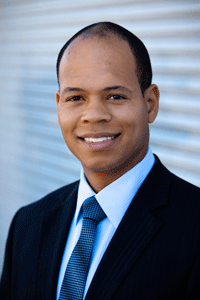
About
Randolph S. Ashton was born in Philadelphia, PA and raised in Richmond, VA. After graduating from the Thomas Jefferson Governor’s School for Government and International Studies, he received his BS from Hampton University (Hampton, Virginia, 2002) and PhD from Rensselaer Polytechnic Institute (Troy, NY, 2007) in Chemical Engineering. During graduate school, he researched how to engineer biomaterials at the nanoscale to regulate the fate of adult neural stem cells. He continued to pursue his interest in stems cells and tissue engineering as a California Institute for Regenerative Medicine and a NIH Postdoctoral Fellow at the University of California Berkeley’s Stem Cell Center. Currently, he is an Associate Professor of Biomedical Engineering at the University of Wisconsin–Madison and Principle Investigator of the Stem Cell Bioprocessing and Regenerative Biomaterials laboratory at the Wisconsin Institute for Discovery. Dr. Ashton’s lab develops novel tissue engineering methodologies to derive brain and spinal cord tissues from human pluripotent stem cells, which can be used to create groundbreaking regenerative therapies and models of neurological disorders.
Education
- BS, Hampton University
- PhD, Rensselaer Polytechnic Institute
- Postdoctoral Fellow, University of California–Berkeley
Research Description
My research seeks to develop novel neural tissue engineering approaches that advance clinical use of human pluripotent stem cells (hPSCs) to treat neurological disorders of the central nervous system (CNS). At a basic science level, I use engineered stem cells, biomaterials, and chemically defined culture platforms to elucidate how factors of the cellular microenvironment orchestrate human neural stem cell (NSC) derivation, differentiation, and tissue morphogenesis (1). The engineered materials provide exquisite spatial and temporal control over stem cell-microenvironmental factor interactions thereby enabling unique reductionistic experimental paradigms capable of deconvolving microenvironmental effects. Then, I apply these tools and acquired knowledge to develop clinically scalable bioprocesses for manufacturing region-specific CNS cell and tissue therapies, which are currently being tested in chick embryo and adult rodent models to evaluate their engraftment and regenerative function after spinal cord injury. Also, I engineer biomaterial culture platforms at the nano-to-microscale to reproducibly recapitulate developmental morphogenetic processes in situ and thereby instruct in vitro morphogenesis of NSC-derived, CNS tissue models in a standardized manner. The goal is to generate 2- and 3-D CNS tissues de novo that contain organotypic tissue architecture and region-specific cell phenotype diversity. I aim to use these ‘next-gen’ CNS models to investigate the pleotropic and region-specific pathologies of complex neurological disorders.
(1) Ashton, R.S., Keung, A.J., Peltier, J., Schaffer, D.V. (2011). Progress and prospects in stem cell engineering. Annual Review of Chemical and Biomolecular Engineering, 2, 479-502.
Affiliations
- 2002 – 2007 Graduate Research Assistant, Lab of Ravindra Kane at RPI
- 2007-2011 Postdoctoral Fellow, Labs of David Schaffer and Kevin Healy at UC Berkeley
- 2011 Postdoctoral Fellow, Labs of David Schaffer and Kevin Healy at UC Berkeley
- 2011 – Assistant Professor, UW–Madison Department of Biomedical Engineering & Wisconsin Institute for Discovery
- 2015 – Faculty Trainer, UW–Madison Neuroscience Training Program
- 2015 – Faculty Trainer, UW–Madison Material Science Program
Honors
- 2002 – 1999 Hampton University Presidential Scholarship Recipient
- 2004 – 2002 National Consortium for Graduate Degrees for Minorities in Engineering Fellow
- 2006 – 2004 NIH-NIGMS Biomolecular Science and Engineering Training Fellow
- 2007 – 2002 Rensselaer Polytechnic Institute Dean Fellowship Recipient
- 2009 – 2008 California Institute for Regenerative Medicine (CIRM) Postdoctoral Fellow
- 2011 – 2009 NIH Postdoctoral Fellow, National Heart Lung and Blood Institute (NHLBI)
- 2013 BMES – Cell and Molecular Bioengineering SIG ‘Rising Star’
- 2014 – 2019 Burroughs Wellcome Fund Innovator in Regulatory Science
- 2015 2015 Emerging Investigator, Chemical Communications (An RSC Journal)
- 2016 2016 Young Investigator Faculty Award, Regenerative Medicine Workshop at Hilton Head, SC
- 2017 NSF CAREER Awardee, CBET Division, Engineering of Biomedical Systems (EBMS)
